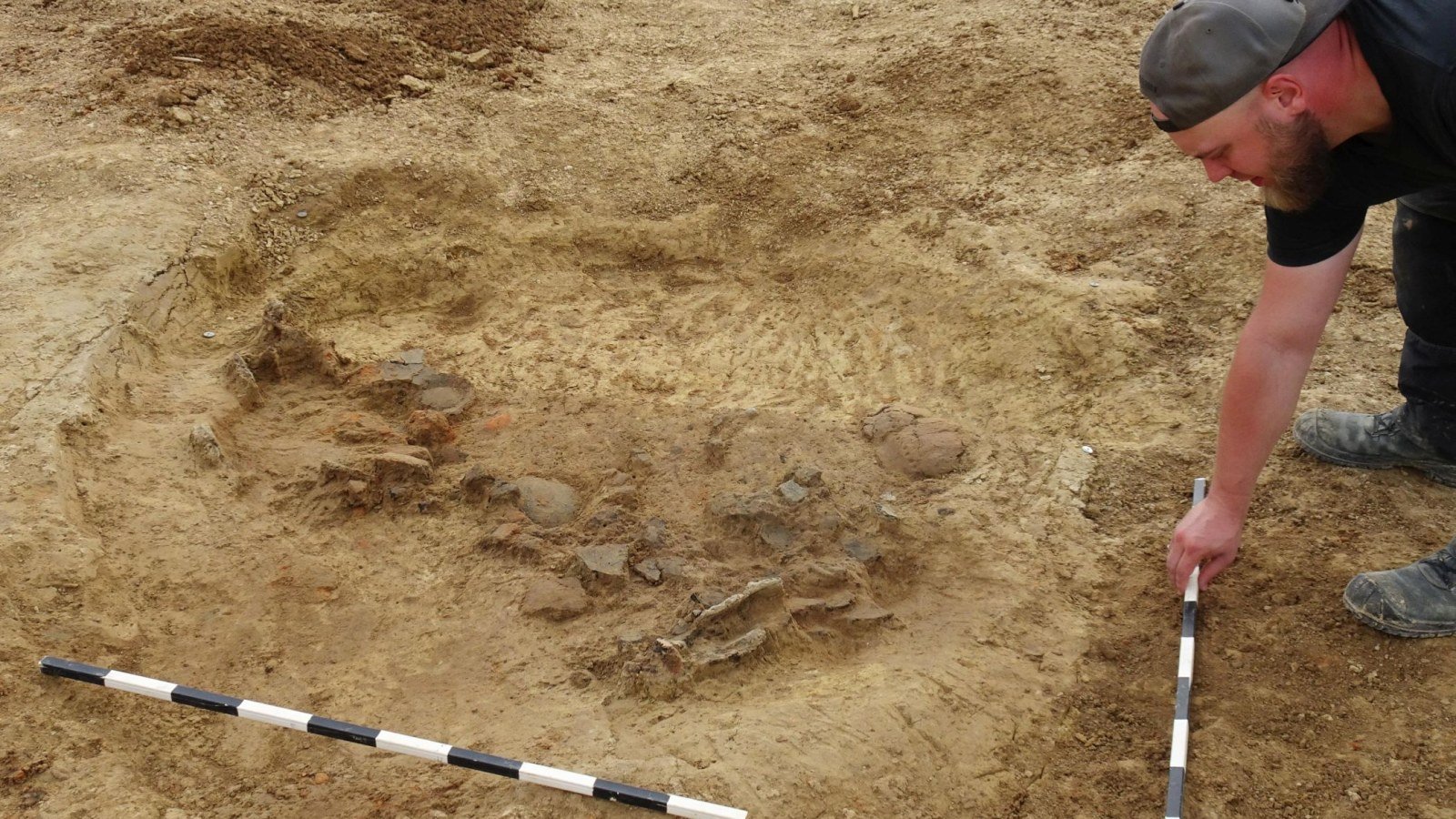Approximately 2,000 years ago, a group of graves containing cremated human remains were discovered by archaeologists. One of the graves included a very remarkable discovery.
The burials were discovered by researchers with the Regional Association of Westphalia-Lippe (LWL) in western Germany, next to Fröndenberg and just outside of Dortmund.
Recent clay mining operations in the area have found proof of prehistoric human habitation, mainly during the Iron Age. But the LWL archaeologists were shocked by the most recent discoveries.
"When a few remains of corpses were uncovered, it quickly became clear that we had found a small burial ground here," Eva Cichy of LWL Archeaology said in a press release.
The researchers discovered the remains of containers used as burial urns for cremated remains in several of the sites.
The team discovered a number of minor pits in addition to one very significant larger one. This larger pit is about three feet across and oval in shape. The researchers discovered numerous, especially huge ceramic pieces at the pit's edge. Some of these included embellishments, including finger prints.
Similar pottery objects from the third and second century B.C. have been discovered in different regions of Germany in the past.
In addition to burnt bone fragments, the pit also had many loom weights and a painted spindle whorl, a disk-shaped object with a hole in the middle. These discoveries suggest that the person buried there was most likely a woman because weaving was done with the use of the loom weights and spindle whorls.
A very well-preserved flint arrowhead and Iron Age ceramic fragments were discovered by the researchers in another hole.
The arrowhead was produced by people of the Bell Beaker culture, who lived in Europe about 4,500 years ago, and thus looks to be far older than the burial site, according to the researchers.
The individuals who dug the graves may have discovered the artifact and purposefully buried it among the deceased. Alternatively, it might have accidentally fallen into the pit as it was being excavated or filled in.
The discovery of a mummy believed to be around 1,000 years old that was buried in a burial at the summit of a sizable pyramid building in Peru was disclosed by archaeologists earlier this month.
Local media outlets also reported in July on the finding of a pre-Hispanic cemetery in Colombia.








